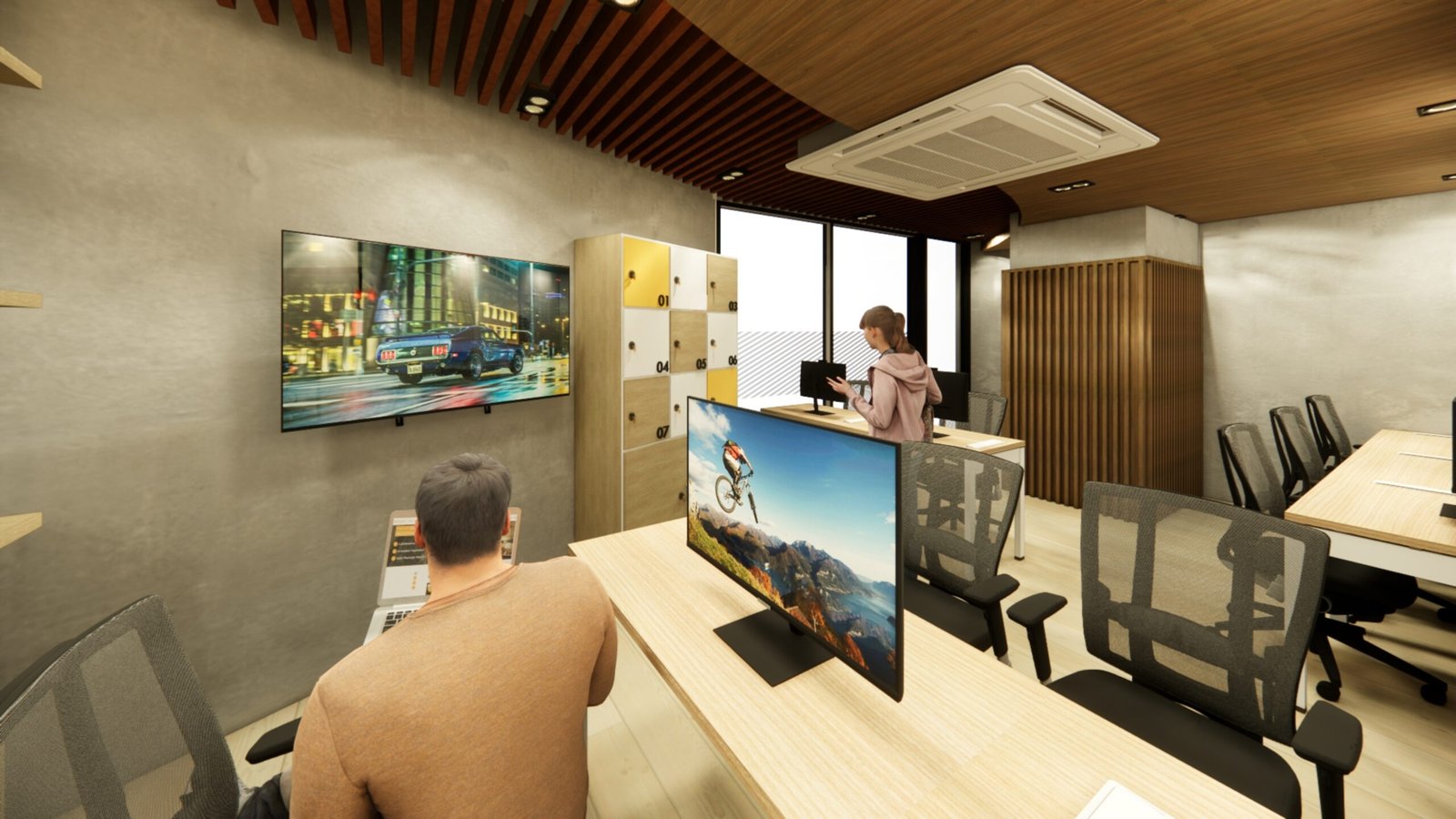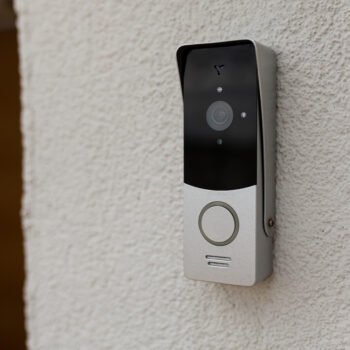The monitor landscape has exploded in 2025. We’re not talking about your typical 24-inch desktop displays anymore. Today’s largest computer monitors in 2025 are pushing boundaries that seemed impossible just a few years ago.
Think 65-inch gaming behemoths. Picture ultra-wide screens that span your entire desk. These aren’t just bigger monitors – they’re completely different beasts that transform how we work, game, and create.
Why Giant Monitors Dominate 2025
The shift toward massive displays isn’t just about showing off. There are real, practical reasons why biggest monitors in 2025 have become the go-to choice for serious users.
Productivity Power: Multitasking on Massive Screens
Multi-window workflows have never been easier. With a 49-inch ultrawide or 55-inch 4K display, you can run multiple applications side-by-side without feeling cramped.
Imagine this setup:
- Code editor taking up one-third of your screen
- Browser with documentation open on another third
- Terminal and file explorer sharing the remaining space
No more constant Alt+Tab switching. Everything stays visible at once.
Gaming Immersion: Beyond Ultrawide
Gaming on giant computer displays creates an entirely different experience. The peripheral vision engagement pulls you deeper into virtual worlds than traditional monitors ever could.
Modern games support these massive resolutions beautifully. Racing games feel like you’re actually behind the wheel. First-person shooters give you tactical advantages with wider field-of-view.
Creative Workflows: 8K Editing & Design
Video editors and designers are embracing these large canvases for good reason. Color grading becomes more precise when you can see every detail. Timeline scrubbing is smoother with more horizontal real estate.
8K content editing demands serious screen space. These monitors deliver it without compromise.
Top 5 Largest Computer Monitors of 2025 (50″ and Above)
Asus ROG Swift PG65UQ: King of Size
The 50-inch computer monitor champion remains the Asus ROG Swift PG65UQ at 65 inches. This absolute unit dominates any desk setup.
Key Specifications:
- Size: 65 inches
- Resolution: 4K (3840 x 2160)
- Refresh Rate: 144Hz
- Response Time: 4ms GTG
- HDR: DisplayHDR1000
- Sync Technology: G-Sync Ultimate
Special Features:
- Thin bezels for minimal distraction
- Premium build quality with sturdy construction
- 95% DCI-P3 color gamut for accurate colors
- Multiple connectivity options including DisplayPort
The catch? Stock availability has been inconsistent throughout 2025. The DPI at this size might feel low for users sitting close to the screen.
LG OLED55CXPUA: Best for Gaming
This 55-inch OLED TV doubles as an incredible gaming monitor. Console gamers especially love this choice.
Key Specifications:
- Size: 55 inches (up to 77″ available)
- Resolution: 4K (3840 x 2160)
- Refresh Rate: 120Hz
- Response Time: 1ms
- Panel Type: OLED
- Sync Technology: G-Sync/FreeSync compatible
Special Features:
- HDMI 2.1 support for next-gen consoles
- Perfect black levels thanks to OLED technology
- Infinite contrast ratio for stunning visuals
- Significantly cheaper than equivalent PC monitors
Potential concern: OLED burn-in risk with static UI elements during extended PC use.
Philips Momentum 558M1RY: Budget Giant
The most affordable option in the 55-inch category. Great specs without the premium price tag.
Key Specifications:
- Size: 55 inches
- Resolution: 4K (3840 x 2160)
- Refresh Rate: 120Hz
- Response Time: 4ms GTG
- HDR: DisplayHDR1000
- Sync Technology: FreeSync Premium Pro
Special Features:
- Bowers & Wilkins speakers with integrated woofer
- Low latency even with HDR enabled
- Ultra-thin design with minimal bezels
- Excellent value proposition for the size
Note: Requires latest drivers for optimal text sharpness when used as PC monitor.
Samsung Odyssey G9: Widest Computer Monitor
The 49-inch super ultrawide that changed everything. This isn’t just wide – it’s revolutionary.
Key Specifications:
- Size: 49 inches
- Resolution: 5K (5120 x 1440)
- Aspect Ratio: 32:9
- Refresh Rate: 240Hz
- Response Time: 1ms GTG
- Curvature: 1000R
Special Features:
- Equivalent to two 27-inch monitors side by side
- QLED technology for vibrant colors
- Extreme curvature for maximum immersion
- HDR1000 support for enhanced contrast
Perfect for: Gamers who prioritize width over height, productivity users managing multiple applications.
Dell U4919DW: Best for Work
The professional’s choice for ultrawide productivity. Business features meet massive screen real estate.
Key Specifications:
- Size: 49 inches
- Resolution: 5K (5120 x 1440)
- Aspect Ratio: 32:9
- Refresh Rate: 60Hz
- Curvature: 3800R (less curved than gaming options)
- Panel Type: IPS
Special Features:
- KVM functionality for multiple PC connections
- Flatter curvature for better viewing angles
- Business-optimized settings out of the box
- Professional color accuracy for work applications
Ideal for: Business users, content creators, anyone sharing screen content with others.
Key Specs Compared
| Monitor | Size | Resolution | Refresh Rate | Best For |
| Asus PG65UQ | 65″ | 4K | 144Hz | Size enthusiasts |
| LG OLED55CX | 55″ | 4K | 120Hz | Console gaming |
| Philips 558M1RY | 55″ | 4K | 120Hz | Budget-conscious |
| Samsung G9 | 49″ | 5K UW | 240Hz | PC gaming |
| Dell U4919DW | 49″ | 5K UW | 60Hz | Professional work |
Who Needs Large Computer Monitors? Use Cases
Coders & Analysts: Multi-Window Mastery
Software developers love the screen real estate. You can keep your IDE, browser, terminal, and documentation visible simultaneously. No more context switching between windows.
Data analysts benefit similarly. Spreadsheets, charts, and databases can coexist on the same screen without cramping.
Hardcore Gamers: Ultrawide vs. Super-Sized
The choice depends on your gaming style:
- Competitive gamers often prefer ultrawide for peripheral vision advantages
- Immersive single-player enthusiasts gravitate toward larger 16:9 displays
- Sim racing fans almost universally choose ultrawide for realistic cockpit views
Video Editors: Color Accuracy at Scale
8K gaming monitor displays provide the canvas that 8K content demands. Color grading becomes more precise when you can see subtle gradations clearly.
Timeline editing flows smoother with horizontal space. You can see more clips at once, making cuts and transitions more intuitive.
Critical Buying Considerations
Price vs. Value: When to Splurge
Large monitors represent significant investments. Here’s when the premium makes sense:
- Professional work that directly benefits from screen space
- Gaming enthusiasts who spend 20+ hours weekly gaming
- Content creators working with high-resolution media
- Multi-taskers managing complex workflows
Budget alternatives exist. OLED TVs often provide better value than equivalent PC monitors, especially for gaming-focused setups.
Future Trends: What’s Next After 50″?
Foldable & Modular Displays
The next evolution might not be bigger screens – but flexible ones. Imagine a monitor that folds from ultrawide to traditional 16:9 depending on your task.
Modular displays could let you combine multiple panels seamlessly. Build your ideal screen configuration from smaller, more manageable pieces.
AI-Optimized Scaling for Text/UI
Current large monitors sometimes struggle with text clarity. AI-powered scaling could solve this by intelligently adjusting UI elements based on viewing distance and screen size.
Machine learning might optimize color profiles and brightness automatically based on content type and ambient lighting.
Conclusion: Is a 50″+ Monitor Right for You?
Large monitors aren’t for everyone. They demand significant desk space, proper viewing distances, and often graphics cards capable of driving high resolutions.
Consider a large monitor if:
- You work with multiple applications simultaneously
- Gaming immersion is a priority
- You create content at high resolutions
- Desk space isn’t a limiting factor
Stick with traditional sizes if:
- Budget is the primary concern
- Desk space is limited
- You primarily use single applications
- Portability matters
The largest computer monitors of 2025 offer incredible experiences for the right users. Choose based on your specific needs, not just the wow factor. Whether you go ultrawide or super-sized, these displays represent the cutting edge of desktop computing.
The future of computing is big, immersive, and more engaging than ever. The question isn’t whether large monitors will continue growing – it’s how big they’ll get.





